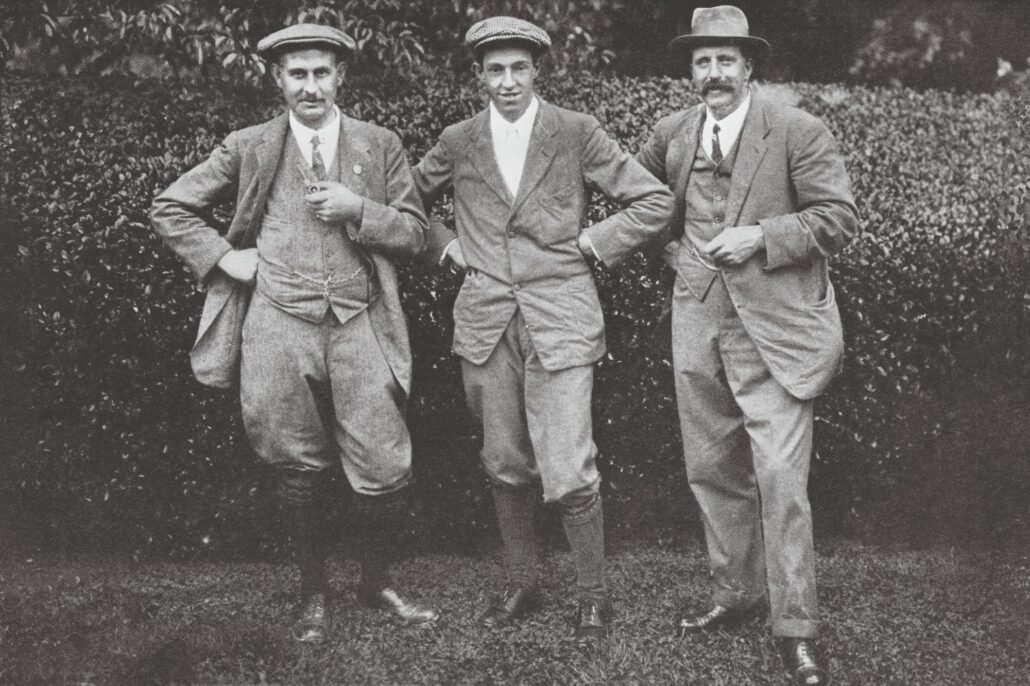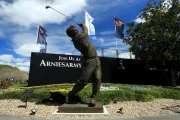The name of Francis Ouimet is revered by those who honor the history of golf in America.
The year was 1913 and Ouimet, a young amateur, found himself in the fray at the U.S. Open with the two biggest names in professional golf at that time — Harry Vardon and Ted Ray.
What transpired at The Country Club went down as one of the most stunning upsets in the world of sports, not just golf. Ouimet tied Vardon and Ray after 72 holes then bested the two giants of the game in an 18-hole playoff.
Ouimet, in an interview with The American Golfer, said this: “It would be nonsensical for me to say that at the start of the play-off I felt confident of defeating Vardon and Ray.”
Ouimet got behind early in the playoff but kept fighting his way back. The three were tied at the turn.
Ray blew his chances when he made double-bogey at the 15th hole. Ouimet trailed Vardon by a shot going to the 17th. It was there that everything swung Ouimet’s way. Vardon tried to cut the corner of the dogleg and found the bunker that is now named after him. Forced to pitched out sideways, he made bogey, Ouimet made birdie and went on to win.
Last month, the unheralded Mito Pereira was right on the doorstep of recording his own stunning upset at the PGA Championship. A double-bogey at the final hole opened the door for Justin Thomas and J.T. stepped right through it, besting Pereira in the playoff. Will there be a surprise Mito Pereira-ish type of challenger this week.
The Country Club course that will be on display this week is actually a composite chosen from the 27 holes that make up The Country Club. Also, there’s no one architect with his name attached to this masterpiece — there are many.
Here are some facts regarding The Country Club: Par: 70 — yardage 7,254 yards.
-
1893 Architects of the first 6 holes: Laurence Curtis, Arthur Hunnewell, Robert Bacon
-
1894 Architect expanding TCC to18 holes: Willie Campbell
-
Update in response to 1899’s Haskell ball: Herbert Jaques and G. Herbert Windeler
-
Primrose Nine, 1927: William Flynn
-
Most recent restoration: Gil Hanse , 2013-19
-
Average green size: 4,388 sq. feet
-
Acres of Fairway: 29
-
Acres of Rough: 25
-
Bunkers: 82
-
Water Hazards: 4
- Greens: Poa annua cut to .110 inch
-
Tees: Poa annua/Creeping Bentgrass cut to .275 inch
-
Fairways: Poa / Creeping Bentgrass cut to .300 inch
-
Rough: Blue grass/Rye grass/Poa annua cut to three inches
Pay attention to the sizes of those greens — really, really small. There are only two par fives and odds are very few players will be able to reach both of them in two, given the fact that the greens are extraordinarily small on those holes.
What will be the winning score? Probably something in the mid-to-high numbers under par — Seven, eight or nine, possibly but not probably 10-under.
Click Here For The USGA Flyover Video Of Every Hole At The Country Club:







































3 Comments
baxter cepeda
I would say almost no doubt someone we know almost nothing about will contend. If the course is as tight and tough as advertised, it could be someone outside the usual suspects.
How cool with it be if Fitzpatrick backs his US Am win here. He kinda looks like an amateur kid still.
Tom Edrington
A lot of numbers are being thrown out regarding winning score, most think less than 5-under par…..we shall see; Great venue, I think it will take a great player.
baxter cepeda
Yes it will be tough and it will be a great player. No doubt about that. This is an absolutely marvelous place which again today’s camera technologies/drones are bringing to light. It’s ridiculous the Usga took over 3o years between visits to the true home of US Golf.